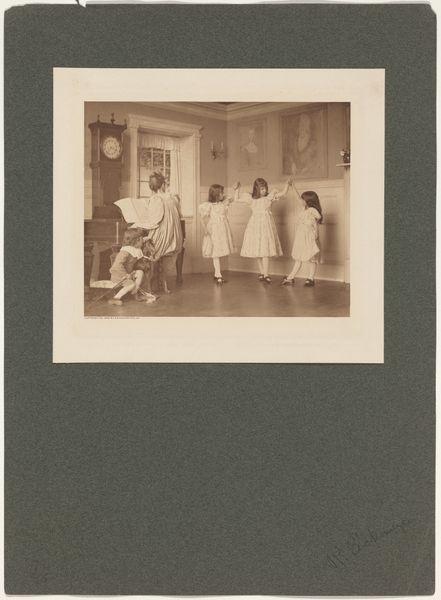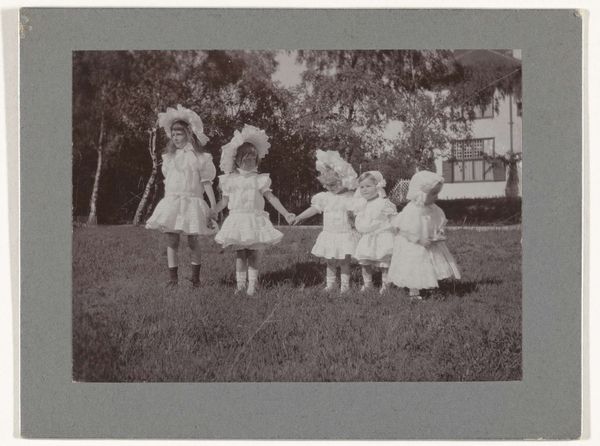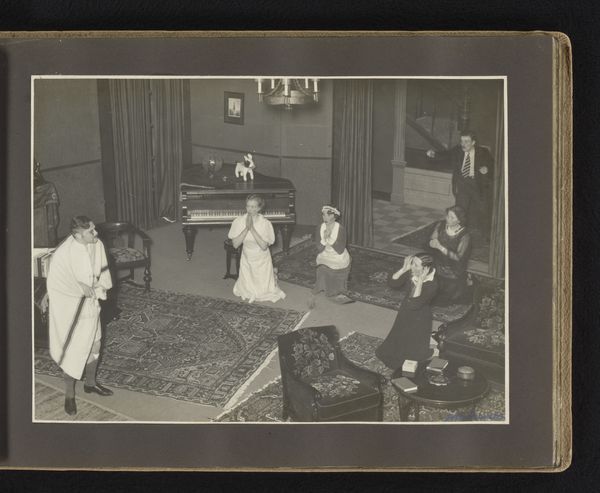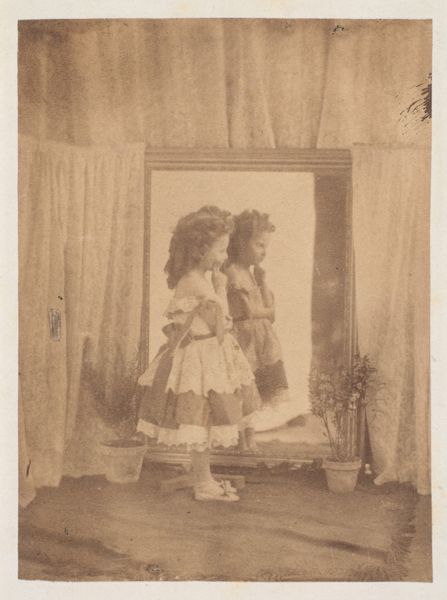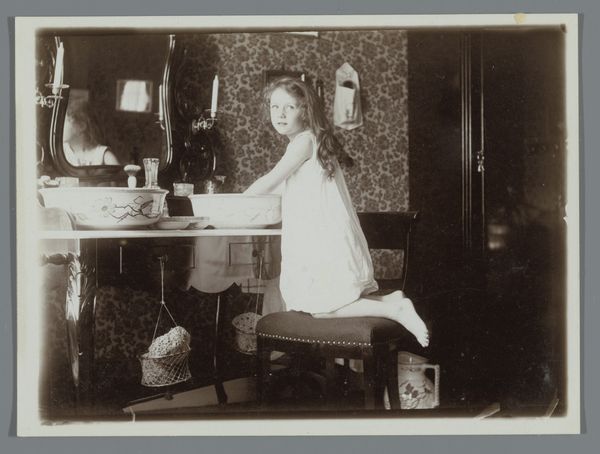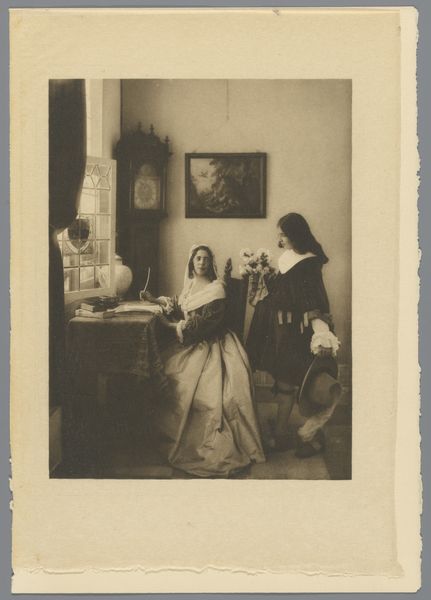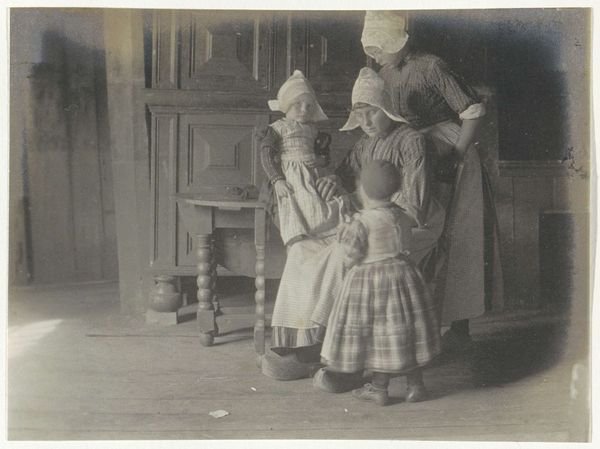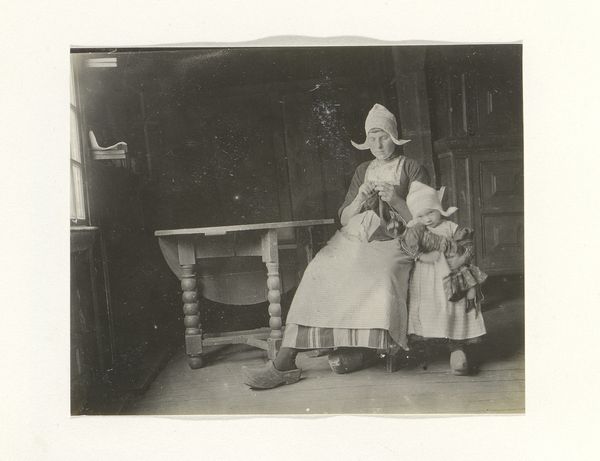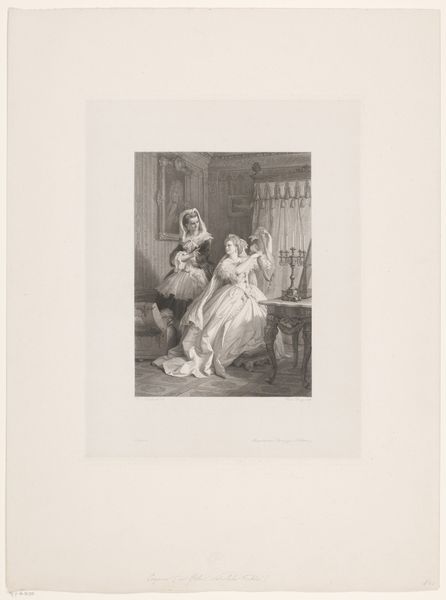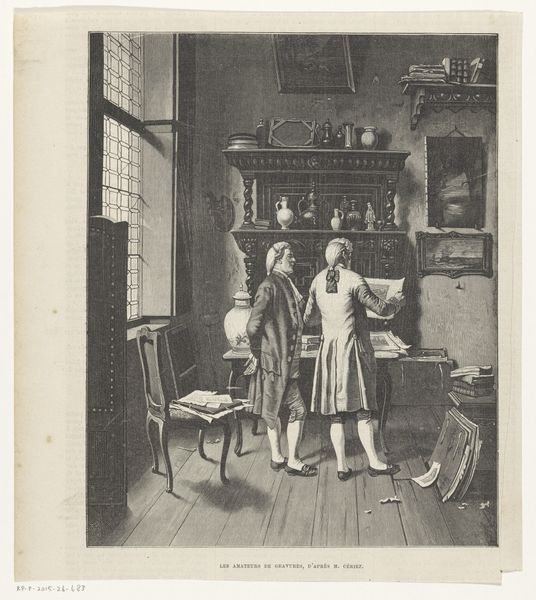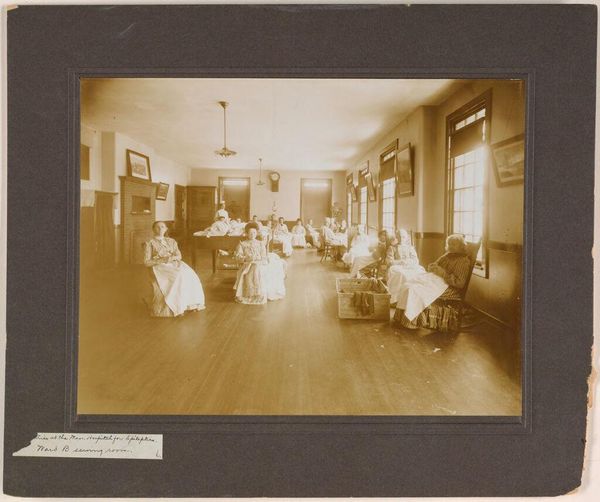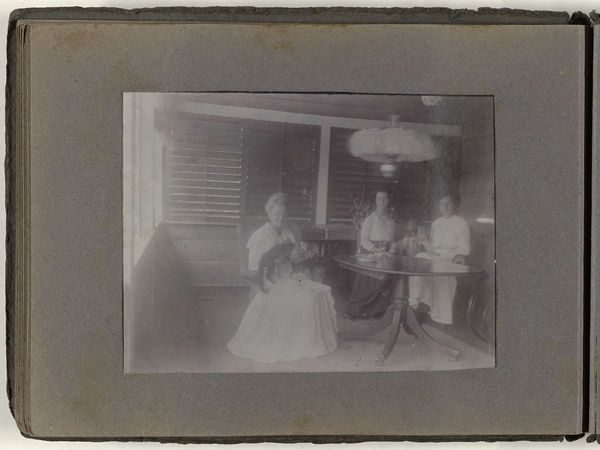
Dimensions: 13.9 × 17.2 cm (image); 15.4 × 18.4 cm (paper); 19.4 × 21.6 cm (mount); 38 × 28 cm (hinged paper)
Copyright: Public Domain
Curator: Rudolph Eichemeyer Jr.'s "The Dance", created in 1899, presents an intimate glimpse into a late-Victorian parlor. The photograph, rendered in soft, sepia tones, is currently held in the collection of the Art Institute of Chicago. Editor: It feels staged but there's an energy here; I find myself drawn to the textures of the girls’ dresses and the light catching on the glossy wood floor. It projects such a feeling of a carefree afternoon, doesn't it? Curator: Yes, though pictorialism, which is at play here, allows photography to function as "high art" through the crafting and manipulation of photographs; think of processes like toning and gum bichromate printing to elicit that painted mood. It also is deeply indebted to Impressionist paintings and their interest in natural light. Editor: Interesting... that makes me think about how this photograph exists within a specific culture, as something consumed. Its domestic setting reminds me of traditional genre painting and the societal construction of childhood during that era. Children belonging to wealthy white families. Curator: Absolutely. Eichemeyer worked meticulously with the materials. His manipulation of the photographic process speaks to an ambition that rejects the mass production of the industrial era in the favour of a handcrafted, one-of-a-kind image. Look closely; see the fine detail he coaxes out of what seems like everyday life? Editor: And I think that’s precisely what makes it resonate beyond its surface. What could have been merely a sentimental scene of privileged life has instead morphed, over time, into a historical artifact. It prompts questions about who has access to childhood, leisure, art, and who gets to control those representations, too. Curator: It's an exercise in considering labour really, both that of the subjects within the image and Eichemeyer's as the maker. He elevates his process, inviting his audience to consider value through making and consuming photography. Editor: Indeed. “The Dance” is more than just an image of children playing. It embodies the complex interplay between material, society, and artistic intention within photography’s history. Curator: Ultimately, a lovely little distillation of photographic technique.
Comments
No comments
Be the first to comment and join the conversation on the ultimate creative platform.
